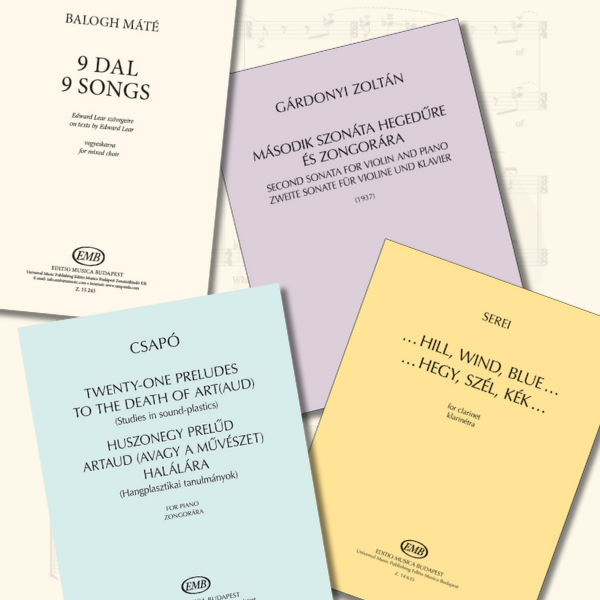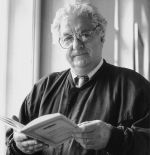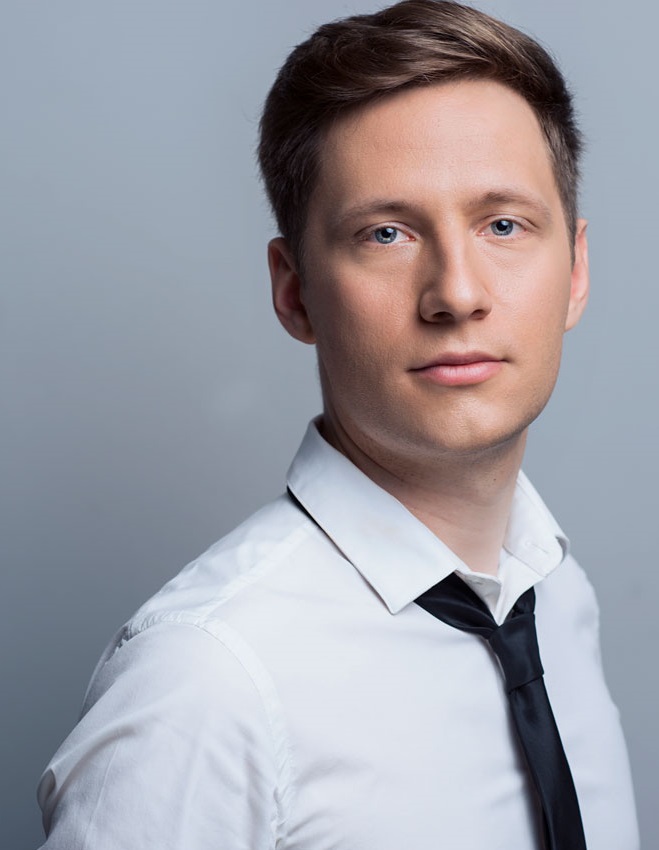New contemporary works from UMPEMB

Several new contemporary instrumental and choral works was published by Universal Music Publishing Editio Musica Budapest in the past months.
Discover the novelties by Zoltán Gárdonyi, Gyula Csapó, Zsolt Serei, Máté Balogh and other excellent composers.
Sándor Balassa 1935-2021
 Balassa received his diploma in composition in 1965, at the age of thirty. In the subsequent years, his compositions attracted considerable international attention. He won a prize at the Paris Rostrum of Composers already in 1971, and from the late seventies on, he was receiving commissions from institutions like the Koussevitzky or the Elizabeth Sprague Coolidge Foundations or the Boston Symphony Orchestra. The main characteristics of his music are the extraordinary diversity of genres, the rich invention, and the strong lyrical quality; the latter is connected with his special sensitivity towards vocal music and poetry. His early style, based on free dodecaphony, gradually gave way to a more diatonic way of thinking, and the influence of the European musical past and of Hungarian folk tradition became a decisive element.
Balassa received his diploma in composition in 1965, at the age of thirty. In the subsequent years, his compositions attracted considerable international attention. He won a prize at the Paris Rostrum of Composers already in 1971, and from the late seventies on, he was receiving commissions from institutions like the Koussevitzky or the Elizabeth Sprague Coolidge Foundations or the Boston Symphony Orchestra. The main characteristics of his music are the extraordinary diversity of genres, the rich invention, and the strong lyrical quality; the latter is connected with his special sensitivity towards vocal music and poetry. His early style, based on free dodecaphony, gradually gave way to a more diatonic way of thinking, and the influence of the European musical past and of Hungarian folk tradition became a decisive element.Hesperus by Bella in Budapest

In 2017, Máté Bella composed his work Hesperus for viola and ensemble. The work was commissioned by the Ensemble Intercontemporaine and premiered on 16 February 2019 on French Radio. On May 18, Péter Bársony will be the soloist of the Hungarian premiere at the Budapest Music Center, the UMZE ensemble will be conducted by Gregory Vajda. We asked the composer on the occasion of this coming performance.
What kind of compositional ideas have you realized in Hesperus?
This piece is the third one in a series: First, Chuang Tzu’s Dream was written for cello and ensemble, then came Trance for violin and ensemble, and finally, Hesperus for viola and ensemble joined them. These compositions are actually concertos, and I am mainly interested in this genre to present the possibilities of the solo instrument as colourfully as possible. The ensemble draws a polyphonic background behind the solo instrument as if to display the shadow of the soloist, and at the same time, it acts as a kind of echo that takes over and transforms musical elements from the soloist.
Photo: VivienNaomi Photography
György Kurtág at 95
 “Every note he writes is essential. There is never an idea of small talk. There is never an idea of wanting to please somebody or an audience. For him, there is only the truth, the essential, that you never can lie when you make music.” – That’s how Heinz Holliger recently summed up the life and work of his friend and fellow musician György Kurtág who soon turns 95. Holliger’s short, considered statements echo Kurtág’s notoriously aphoristic musical style.
“Every note he writes is essential. There is never an idea of small talk. There is never an idea of wanting to please somebody or an audience. For him, there is only the truth, the essential, that you never can lie when you make music.” – That’s how Heinz Holliger recently summed up the life and work of his friend and fellow musician György Kurtág who soon turns 95. Holliger’s short, considered statements echo Kurtág’s notoriously aphoristic musical style.
“You never come too late” – said Kurtág once, referring to his slow, meticulous working method. He dates his mature composer career from 1958 when after one year stay in Paris, he returned to his Hungarian isolation behind the iron curtain being aware of his task of life, and, as he put decades later, “that outward circumstance cannot influence what is now happening to me.”
This more than sixty-year-old notion is valid even today since Kurtág follows unshakably his own path. The fame of his unique musicality as a composer and as a teacher first has been revealed only for a small circle of Hungarian enthusiast. Sayings of Péter Bornemisza remained unnoticed in Darmstadt in 1968. Not so the premiere of the Messages of the Late R. V. Troussova fifteen years later in Paris, recorded under the baton of Pierre Boulez. And since then the camp of the Kurtágians has gradually grown to uncountable. Even if the centre of his output is unalterable, the musical manifestations are astoundingly varied: from aethereal to vulgar, from gentle to cruel, from menacing to grotesque. The common feature in this whole spectrum is that the gestures always communicate in a direct and unambiguous manner.
On the Centenary of András Szőllősy
 "The third master" - his faithful monographer, János Kárpáti used this epithet on András Szőllősy who was born on February 27, 1921, a hundred years ago. He was the third beside György Ligeti and György Kurtág, who were all born in Transylvania in the 1920s, and then graduated from the Budapest Academy of Music - that is, he was the third behind his world-famous colleagues and friends.
"The third master" - his faithful monographer, János Kárpáti used this epithet on András Szőllősy who was born on February 27, 1921, a hundred years ago. He was the third beside György Ligeti and György Kurtág, who were all born in Transylvania in the 1920s, and then graduated from the Budapest Academy of Music - that is, he was the third behind his world-famous colleagues and friends.
Szőllősy’s oeuvre is thin, consisting of barely thirty compositions, mostly from the 1970s and 1980s, followed by a few “autumn flowers” until 2002. The late start of the career is explained by the fact that although Szőllősy studied composition as a student of Zoltán Kodály, he felt more like a musicologist until the mid-1960s, collecting and editing the works and writings of his great predecessors, Béla Kodály and Bartók. (his Sz-numbers are still used to identify Bartók's works).
 Deutsch
Deutsch English
English Español
Español Français
Français Magyar
Magyar Polski
Polski Slovenský
Slovenský Slovenščina
Slovenščina 中文
中文